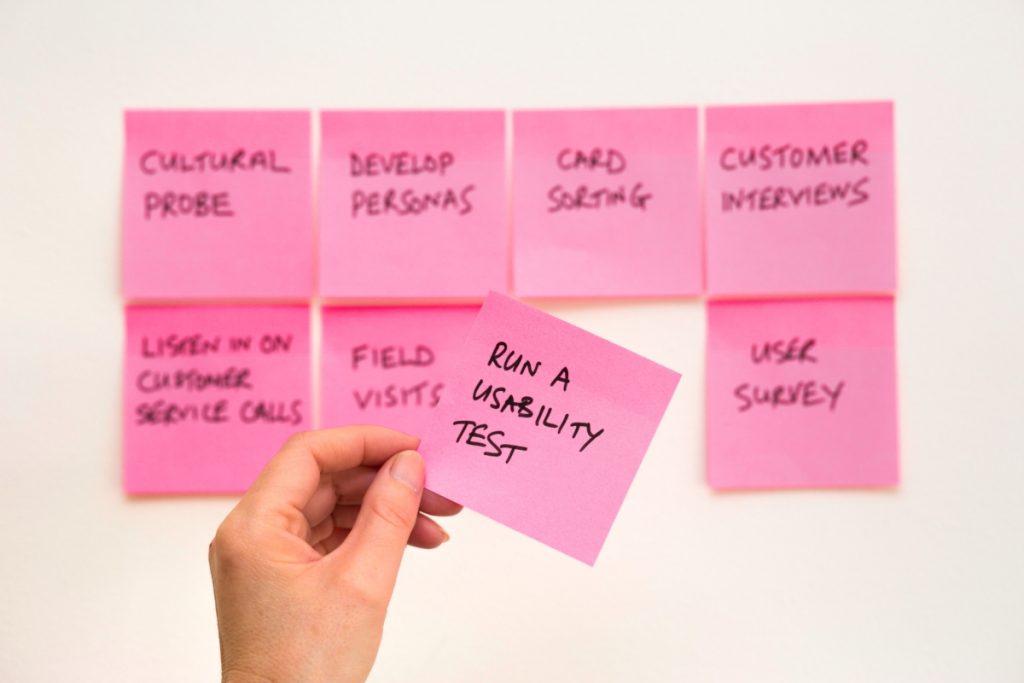
In part 1 of our content testing deep dive we looked at why you should start testing your content as well as looking at performance and A/B testing.
This post will look at other types of content testing you can conduct, including one type of content testing that is often overlooked. Hopefully by reading this you will be able to begin thinking about the types of content testing you can apply to your website or app.
Let’s dig in.

Usability Testing
Usability testing does exactly what it says; it tests how usable your website or app is for users. It assesses whether the digital experience you are presenting to your users works.
Usability testing can highlight design flaws in the purchase flow and show potential pain points for your users. For example, can the user use the search bar to find a product that they might want?
Usability testing is a crucial step. Without conducting proper usability testing you risk annoying customers. It looks at the basic cornerstones of your user experience and without getting these basics right you may have problems retaining your customers, which could even lead to wasted marketing spend.
Core usability testing for an eCommerce website could include the following:
- Can the user add a product to cart
- Are prices displaying correctly
- Are shipping costs added to the checkout total
- Can a user submit a form without filling out all the required values
- Does an error message flag what a user needs to do if they make a mistake
- Can the user navigate the website without using a mouse
- Does site search display the correct results

Accessibility Testing
Accessibility testing is part of usability testing, but it can be overlooked. This type of content testing focuses on whether your website is accessible to users with disabilities. The WHO estimates that 15% of the world’s population has some kind of disability. So that is a lot of customers that you could be excluding if you do not make your website accessible to everyone.
Accessibility testing evaluates your site content and determines whether it is accessible to someone with a visual or hearing impairments. It usually requires technology to help you test your website such as WAVE (or Experte, which can test your whole website at once) that assesses your site and gives you specific recommendations on what you can do to improve your website’s accessibility.
Making your website accessible is ethically the right thing to do. But aside from the moral implications of not doing it, you are also ignoring customers who could potentially be making purchases on your site. If you do not serve those customers a good experience, someone else will.
Accessibility testing can also uncover contrast fails. A “contrast fail” can make your website hard to read. If users cannot absorb the information that you are giving them, they will go elsewhere.
While a lot of accessibility testing can be automated, a hybrid approach is recommended. This is because some features like keyboard only scrolling cannot be tested with software. Talk to MAQE if you need help making your website accessible to all users. We can uncover accessibility problems and make sure you serve the best possible inclusive digital experience.
Actions You Can Take:
- Conduct regular accessibility audits
- Use tools like WAVE or Google Lighthouse to uncover problems
- Make sure you have descriptive alt tags on all your images
- Audit all your metadata so it’s accessible and useful to disabled users
- Create an accessibility checklist that can be used by your development team
- Use a hybrid approach, there are accessibility issues that software cannot uncover
- Be wary of contrast fails, especially on things like buttons
- Scrutinize your typography so all your copy is legible

UX Copy Testing and Optimization
UX writing has become much more of a focus in recent years. Part of presenting a great digital experience is how users move through your website or app. UX writing is a key part of this journey. Good UX writing draws people into your site or app and makes them easier to use.
UX writing is very different to copywriting or content writing. For a start, UX writers have less space to work with. They also do not have to think about SEO. So industry terms you might want to rank for are not relevant to a UX writer; they only think about the user.
But how do you test it?
There are 3 core factors to consider when you think about UX writing. They can all be tested in a similar way to performance. It should also form part of an overall A/B testing strategy.
Clarity
Is your UX copy clear? It should not have any technical terms or jargon.
Concise
Is your UX copy short and to the point. Every word of your UX messaging has a job to do. Be aware that users tend to read in an “F-shaped pattern” when consuming digital content. So keep your key messaging at the top.
Purpose
Does your UX copy do its job? Is it actually useful? Does it aid the user’s progression through your site? If you are an eCommerce business, does it help the user complete a purchase?
Readability levels
Another factor to consider in your UX copy is readability.
This can be more of an issue in product copy than in your UX writing. It also involves some accessibility factors, such as is your copy actually legible? For this section we will stick to two other factors that do not feed into accessibility; readability and comprehension.
Great UX writing uses simple language. It is highly readable, which means it avoids complex terms and is easy to comprehend. Which means it can then be understood by a wide audience. There is a reason why sites like the BBC use simple language; they want to attract and retain the widest possible audience.
Tools like Hemingway can help you to improve readability. But A/B testing is the best approach to use for optimizing your UX writing. Test out different UX messaging to see where you can make improvements.
Actions You Can Take:
- Examine your UX copy. Is it clear and concise?
- Does all of your UX copy fulfil a purpose? A/B test it with variants to spot improvements
- Test whether your UX copy speaks to key user personas
- Avoid technical jargon in UX copy; it’s not relevant
- Pitch your UX copy and product copy to lower readability levels to attract the widest audience

Talk to MAQE
Do you need help with content testing? MAQE can test every aspect of the experience you present to your users and make improvements, so you present engaging experiences that attract the widest possible audience. Get in touch via [email protected] to find out more.